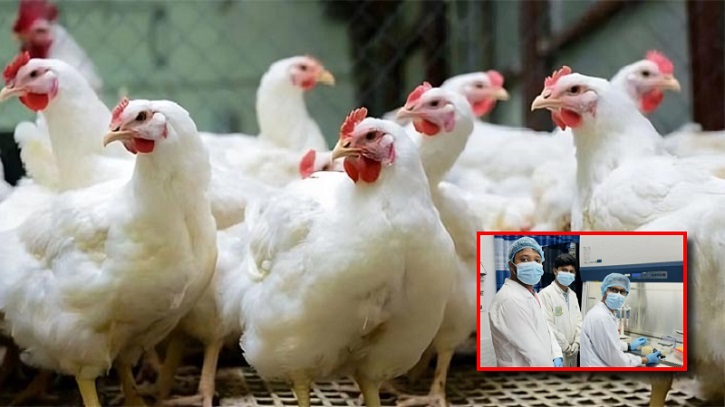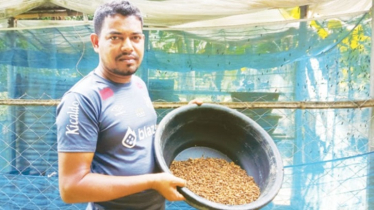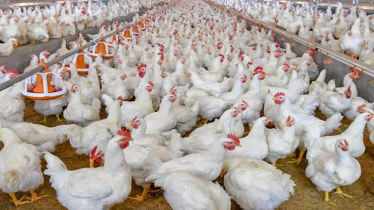
DHAKA: The discovery of a new strain of the Chicken Anemia Virus (CAV), specifically Genotype IIIb, is causing a new wave of concern in Bangladesh's poultry industry. A research team from Bangladesh Agricultural University (BAU) has successfully identified this strain for the first time in the country. After a long period without any major outbreaks, the recent detection in Narshingdi and other regions poses a severe challenge to the national poultry sector.
Professor Dr. Md. Goljar Hossain of the Department of Microbiology and Hygiene at BAU confirmed the breakthrough on Friday (October 17). The critical research was conducted under his supervision by postgraduate student Marjana Akter.
The study, titled 'Molecular Investigation and Genetic Characterization of Chicken Anemia Virus in Bangladesh,' was funded by the University Grants Commission (UGC) and has been published in the internationally renowned journal Microbiology Spectrum by the American Society for Microbiology.
According to Dr. Goljar Hossain, the regular vaccination of breeder flocks in previous years had kept CAV outbreaks at bay in Bangladesh. However, an unexpected outbreak in a commercial broiler farm in the Narshingdi district in 2023, followed by reports from other regions, prompted the in-depth investigation.
Lead researcher Marjana Akter stated that the infected chickens showed clinical symptoms such as anemia, pale combs, and bluish wings. Post-mortem examinations revealed changes in the chickens' thymus, spleen, bursa, liver, and bone marrow.
After confirming the presence of the virus through laboratory analysis, whole-genome sequencing was performed, revealing the strain to be Genotype IIIb, which had not been previously identified in Bangladesh.
The research team's analysis indicates that the genetic structure of the newly detected virus is closely related to a strain found in China. Researchers hypothesize that the virus may have entered the country through international trade or the import/export of poultry.
Dr. Goljar Hossain and Marjana Akter also noted the presence of new mutations in various viral proteins, particularly the VP3 protein. Researchers fear these mutations may contribute to increased disease severity and a greater reduction in immunocompetence (immunosuppression).
Dr. Goljar emphasized that the project's primary goal was to address the information gap regarding the prevalent CAV in Bangladesh and to identify its genomic features. The virus is known to weaken chickens’ immunity against other diseases, stunt growth, and cause massive economic losses for farmers.
He concluded that the genomic analysis of this local viral strain provides a crucial scientific foundation for future efforts in vaccine development, improving diagnostic accuracy, and national surveillance programs.
The research team stressed that to curb the spread of this new CAV genotype, it is now essential to enforce national virological monitoring, update breeder flock vaccines, and strengthen on-farm biosecurity measures.





